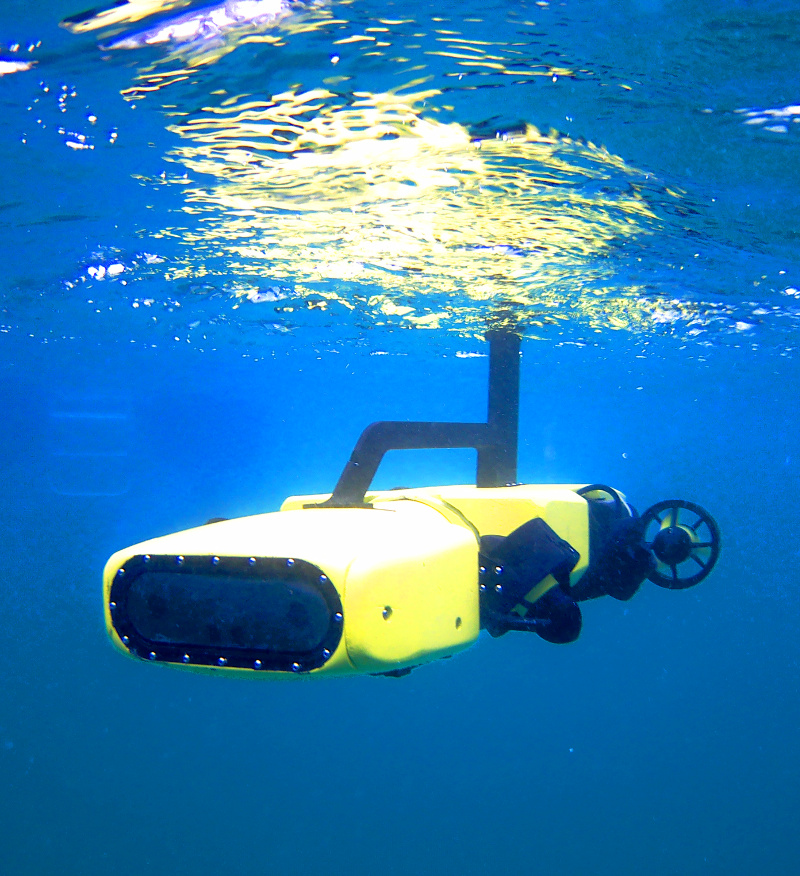Robot trained to help Reef
 A new robot could soon patrol the Great Barrier Reef, spotting and attacking crown-of-thorns starfish.
A new robot could soon patrol the Great Barrier Reef, spotting and attacking crown-of-thorns starfish.
Equipped with a high-tech vision system which allows it to ‘see’ underwater, RangerBot is a low-cost, autonomous robot which, after almost two years of testing, is now ready to be put through its paces on the Reef.
“RangerBot is the world’s first underwater robotic system designed specifically for coral reef environments, using only robot-vision for real-time navigation, obstacle avoidance and complex science missions,” says QUT roboticist Professor Matthew Dunbabin.
“This multifunction ocean drone can monitor a wide range of issues facing coral reefs including coral bleaching, water quality, pest species, pollution and siltation. It can help to map expansive underwater areas at scales not previously possible, making it a valuable tool for reef research and management.
“RangerBot can stay under water almost three times longer than a human diver, gather more data, and operate in all conditions and at all times of the day or night, including where it may not be safe for a human diver.
“The robot is fitted with computer vision to ‘see’ where it’s going and avoid obstacles as well as multiple thrusters so it can move in every direction.
“We’ve ‘trained’ RangerBot to detect crown-of-thorns starfish – and only these coral-destroying starfish – in much the same way as people learn to differentiate between various forms of sea life. Using real time computer vision processed on board the robot, RangerBot can identify these deadly starfish with 99.4 per cent accuracy.
“Once the identification is confirmed, RangerBot can instigate an injection which is fatal for the crown-of-thorns starfish, but doesn’t affect anything else on the reef,” he said.
Professor Dunbabin said unlike single-purpose marine robots – which are more manual and based on expensive acoustic technologies – RangerBot uses innovative vision-based technologies.
“We believe this represents a significant technology leap in both marine robotics and reef protection – the only autonomous, affordable, multi-function solution for effectively detecting and addressing threats to coral reefs,” Professor Dunbabin said.
“It’s an impressive piece of technology, but RangerBot is also deliberately low cost, to allow production to be scaled up once the next level of operational testing is completed and all the necessary approvals are in place.
“Weighing just 15kg and measuring 75cm, it takes just 15 minutes to learn how to operate RangerBot using a smart tablet.
“Our vision is to make RangerBots readily available and accessible to be deployed on the Reef where they’re most needed and to put them in the hands of reef managers, researchers and communities worldwide.”
RangerBot is the result of the Great Barrier Reef Foundation teaming up with QUT roboticists Professor Matthew Dunbabin and Dr Feras Dayoub in 2016 to enter the Google Impact Challenge. As the People’s Choice winner, they secured $750,000 to take the project to the next level.
RangerBot’s capabilities have been extensively tested both in the lab and on the Reef. The next steps will involve further collaboration with the Great Barrier Reef Marine Park Authority, AIMS and others on the specific testing, review and approvals necessary to ensure RangerBot is set to take on Reef duty.








 Print
Print